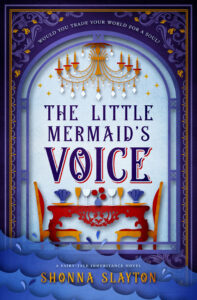This year for the Blogging from A to Z Challenge, I’m writing about the 1800s in celebration of Nellie Bly and Elizabeth Bisland’s race around the world in 1889, the subject of my new novel based on this adventure: Liz and Nellie.
***
Japanese jinrikisha around 1897
Both women were amazed and slightly put off at some of the transportation they rode on their trip around the world. Think back to the late 1800s New York and picture the type of public transit available at the time:
Onmibus, which was like a stagecoach pulled by a horse.
Horsecar, which was like a trolley car, run on a track, but pulled by a horse
Cablecar, which was powered by steam-driven machines.
Elevated trains, the els. steam powered, and in the 1880s almost everyone in Manhattan was only a ten minute walk away from one.
So imagine their surprise when in the East, they encounter the jinrikishas, shortened to ‘ricksha. A simple two-wheeled cart pulled by a two-legged creature instead of a horse. Apparently the ‘ricksha was invented sometime in the mid 1800s, with multiple people claiming first invention.
You know these women had thoughts on the jinrikisha!
Elizabeth is gracious at first:
Now, the jinrikisha is exactly the vehicle in which one would expect to ride in this land of fairy children – large perambulators that hold one person comfortably; but instead of being trundled from behind by a white-capped nursemaid, one of the Henry II. gentlemen, who wears also straw sandals and an enormous blue mushroom hat on his head, ensconces himself between the little shafts in front and prances noiselessly away with it. He has legs as light and muscular as a thoroughbred horse, and can spin along with the ‘rikisha at the rate of five miles an hour. He can, with few intervals for rest, keep this up all day; he will charge you seventy-five cents for the whole; he will not be winded at all, and will be in a gay and charming temper when the day is done. – Elizabeth Bisland while in Japan
Then more honest as the trip unfolds:
Conveyance in the East is a constant source of unhappiness to me. I was deprecatory with the jinrikisha men in Japan, I humbled myself before the chair-bearers of Hong Kong, and now I go and make an elaborate apology to this wretched little beast before I can reconcile it to my conscience to climb into the gharry, or let him drag me about at a gallop. – Elizabeth describing a pony “the size of a sheep.” in Singapore.
Nellie Bly states:
At Colombo I saw the jinricksha for the first time. The jinricksha is a small two-wheel wagon, much in shape like a sulky, except that it has a top which can be raised in rainy weather. It has long shafts joined at the end with a crossbar. The jinricksha men are black and wear little else than a sash. When the sun is hot they wear large hats that look like enormous mushrooms, but most of the time these hats are hanging to the back of the ‘ricksha. There are stands at different places for these men as well as carriage stands. While waiting for patrons they let their ‘rickshas rest on the shafts and they sit in the bottom, their feet on the ground. Besides dressing in a sash these men dress in an oil or grease, and when the day is hot and they run, one wishes they wore more clothing and less oil! The grease has an original odor that is entirely its own.
**
Nothing is patronized more than the ‘rickshas in Singapore, and while they are to be had for ten cents an hour it is no unusual sight to see four persons piled in one jinricksha and drawn by one man.
**
I found the Japanese jinricksha men a gratifying improvement upon those I seen from Ceylon to China. They presented no sight of filthy rags, nor naked bodies, nor smell of grease. Clad in neat navy-blue garments, their little pudgy legs encased in unwrinkled tights, the upper half of their bodies in short jackets with wide flowing sleeves; their clean, good-natured faces, peeping from beneath comical mushroom-shaped hats; their blue-black, wiry locks cropped just above the nape of the neck, they offered a striking contrast to the jinricksha men of other countries.






Interesting post. It must have been a shocker to see that mode of transportation for the first time. I see guys out here in downtown Denver pulling a two-wheel cart with a bicycle. Looks like an incredible work out.
Oh, you know those men had to be in great shape…same with the modern equivalent.
Really interesting post. I can imagine the surprise when the women saw these for the first time. I imagine it would be a bit of a novelty to ride one, but obviously they thought differently!
Debbie
I think overall the women felt awkward about it, but one did mention (I think Nellie) that at least you didn’t have to worry about feeding and watering the pullers since they could take care of that themselves (vs a horse.)